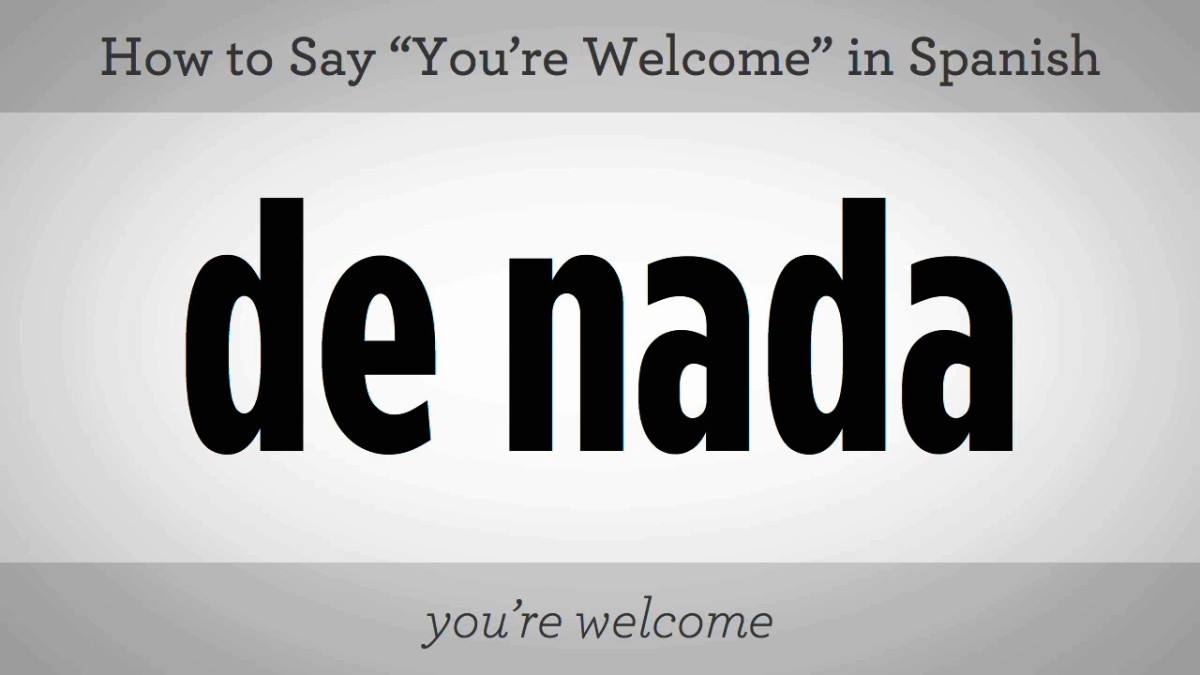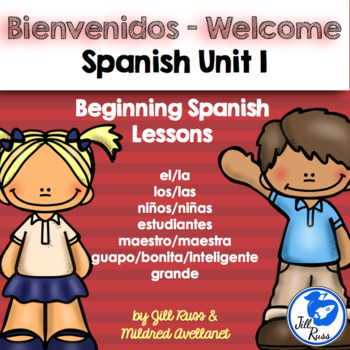Mastering "You're Welcome" In Spanish: Beyond De Nada
Learning a new language is an exciting journey, and one of the most satisfying moments is when you can engage in natural, polite conversation. After someone thanks you in Spanish with a heartfelt "Gracias!", how do you respond? While many might instantly think of "de nada," the world of saying "you're welcome" in Spanish is richer and more nuanced than you might imagine. This article will dive deep into the various ways to express this common courtesy, clarify some common confusions (like "your welcome" vs. "you're welcome"), and help you sound more like a native speaker.
Before we jump in, let's address a common point of confusion right away. The phrase we're focusing on is "you're welcome," which is a response to "thank you." This is different from "your welcome," which implies a noun (e.g., "Your welcome to our home was warm"). While the latter might involve words like "bienvenida," the former—the polite reply—is what most people are searching for. Our journey will primarily explore the many ways to say "you're welcome" as a polite reply, drawing from authoritative translations and real-world usage.
The Undisputed King: "De Nada"
When you ask someone to translate "You're welcome" into Spanish, the first phrase you'll almost certainly hear is "De nada." This is the most common, versatile, and universally understood way to say "you're welcome" across the Spanish-speaking world. Its literal translation is "of nothing" or "it's nothing," implying that what you did was no trouble at all. Think of it as the Spanish equivalent of "no problem" or "it's nothing."
Example:
- Gracias por tu ayuda. (Thanks for your help.)
- De nada. (You're welcome.)
You can use "de nada" in almost any situation, whether formal or informal, with friends, family, or strangers. It's your go-to phrase when in doubt, as confirmed by resources showing "De nada" as one of 11 authoritative translations for "You're welcome".
Beyond "De Nada": Other Polite Replies
While "de nada" is incredibly useful, Spanish offers other ways to express "you're welcome" that can add a touch of formality, emphasize a feeling, or simply offer a different flavor to your conversation.
"No Hay De Qué": "Don't Mention It"
Another excellent and very common alternative to "de nada" is "No hay de qué." This phrase literally translates to "There's nothing to it" or "There's nothing to thank for." It carries a similar meaning to "don't mention it" or "it's no big deal" in English. As noted in the provided data, "don't mention it" is best translated as "de nada o no hay de que" in Spanish. It's polite and slightly more emphatic than "de nada," suggesting that the favor or help was truly insignificant and not worth a thank you.
Example:
- Le agradezco mucho su tiempo. (I really appreciate your time.)
- No hay de qué. (Don't mention it / You're welcome.)
Both "de nada" and "no hay de qué" are widely accepted and interchangeable in many contexts, though "no hay de qué" can feel a little more formal or slightly more dismissive of the effort involved (in a good way!).
When You Want to Be More Emphatic: "You Are Very Welcome"
Sometimes, you want to convey that you were genuinely happy to help, or that the person was truly welcome. The data refers to "You are very welcome," noting 4 authoritative translations. While there isn't a single direct, literal translation for "very welcome" as a response to "thank you," Spanish offers several phrases to convey this sentiment:
- Con gusto / Con mucho gusto: Literally "with pleasure" or "with much pleasure." This is a fantastic way to say "you're welcome" when you genuinely enjoyed helping or providing the service. It's warm and polite.
- Es un placer: "It's a pleasure." Similar to "con gusto," this emphasizes that you were happy to do it.
- Para servirle / Para servirles: "At your service" (formal singular/plural). This is more common in service industries (e.g., a waiter, a hotel receptionist) and conveys a professional willingness to assist.
- Un placer: A shortened, slightly more informal version of "Es un placer."
These phrases add a layer of warmth and sincerity, indicating that the act was not just "nothing," but rather something you were pleased to do.
Adding a Personal Touch: "You're Welcome, My Friend/Beautiful/Pretty Lady"
Just like in English, you can personalize your "you're welcome" by adding a term of endearment or address. The data provides examples like "You're welcome, my friend,""You're welcome, beautiful," and "You're welcome, pretty lady."
- De nada, amigo/a: (You're welcome, friend - masculine/feminine). Use "amigo" for a male friend, "amiga" for a female friend.
- De nada, hermosa/o: (You're welcome, beautiful - feminine/masculine). "Hermosa" for a woman, "hermoso" for a man.
- De nada, guapa/o: (You're welcome, pretty/handsome - feminine/masculine). "Guapa" for a woman, "guapo" for a man.
- De nada, mi amor: (You're welcome, my love). For very close relationships.
- De nada, hija/o: (You're welcome, daughter/son). As seen in the data referencing "Your welcome daughter." This is a term of endearment often used by older people towards younger ones, even if they aren't their actual children.
Adding these terms makes your response more affectionate and personal, suitable for informal settings or when you have a close relationship with the person.
"Welcome" as a Greeting vs. "You're Welcome" as a Response
It's crucial to distinguish between saying "you're welcome" (as a response to "thank you") and saying "welcome" (as a greeting when someone arrives). The data correctly points out that "bienvenido" is the most common translation of welcome as a greeting. As Miguel Ríos famously sang, "¡Bienvenidos!"
- ¡Bienvenido! (Welcome! - to a masculine singular person)
- ¡Bienvenida! (Welcome! - to a feminine singular person)
- ¡Bienvenidos! (Welcome! - to a group of people, or a mixed-gender/masculine group)
- ¡Bienvenidas! (Welcome! - to a group of only feminine people)
These forms are used when someone is arriving at a place or joining a group. They are never used as a response to "thank you." Confusing these two can lead to awkward moments, so remember: bienvenido is for arrivals, de nada (or its variants) is for thanks.
Understanding "Your Welcome" (The Noun) in Spanish
As mentioned earlier, the phrase "your welcome" can refer to the noun "welcome" (e.g., "We appreciated your warm welcome"). In this context, "welcome" translates differently. For instance, "your welcome" might refer to the act of welcoming someone, which could be translated as "tu bienvenida" (your welcome/reception) or "tu acogida" (your welcome/reception/hospitality). The data specifically mentions "Your welcome in Spanish" in this broader sense, often leading to these noun forms.
An interesting idiom mentioned in the data is "overstay your welcome." This translates to something like "abusar de la hospitalidad" (to abuse the hospitality) or "quedarse más tiempo de lo debido" (to stay longer than one should). This clearly shows that "welcome" here is a noun, not a polite reply.
So, if you're talking about the *act* of welcoming someone, you'll use forms of "bienvenida" (e.g., "Su bienvenida fue muy cálida" - Their welcome was very warm). But if you're replying to "thank you," stick to "de nada" and its cousins.
Context is Key: Choosing the Right "You're Welcome"
While "de nada" is almost always safe, understanding

Your Welcome In Spanish

Your Welcome In Spanish

Not Just De Nada: 20 Ways to Say You're Welcome in Spanish